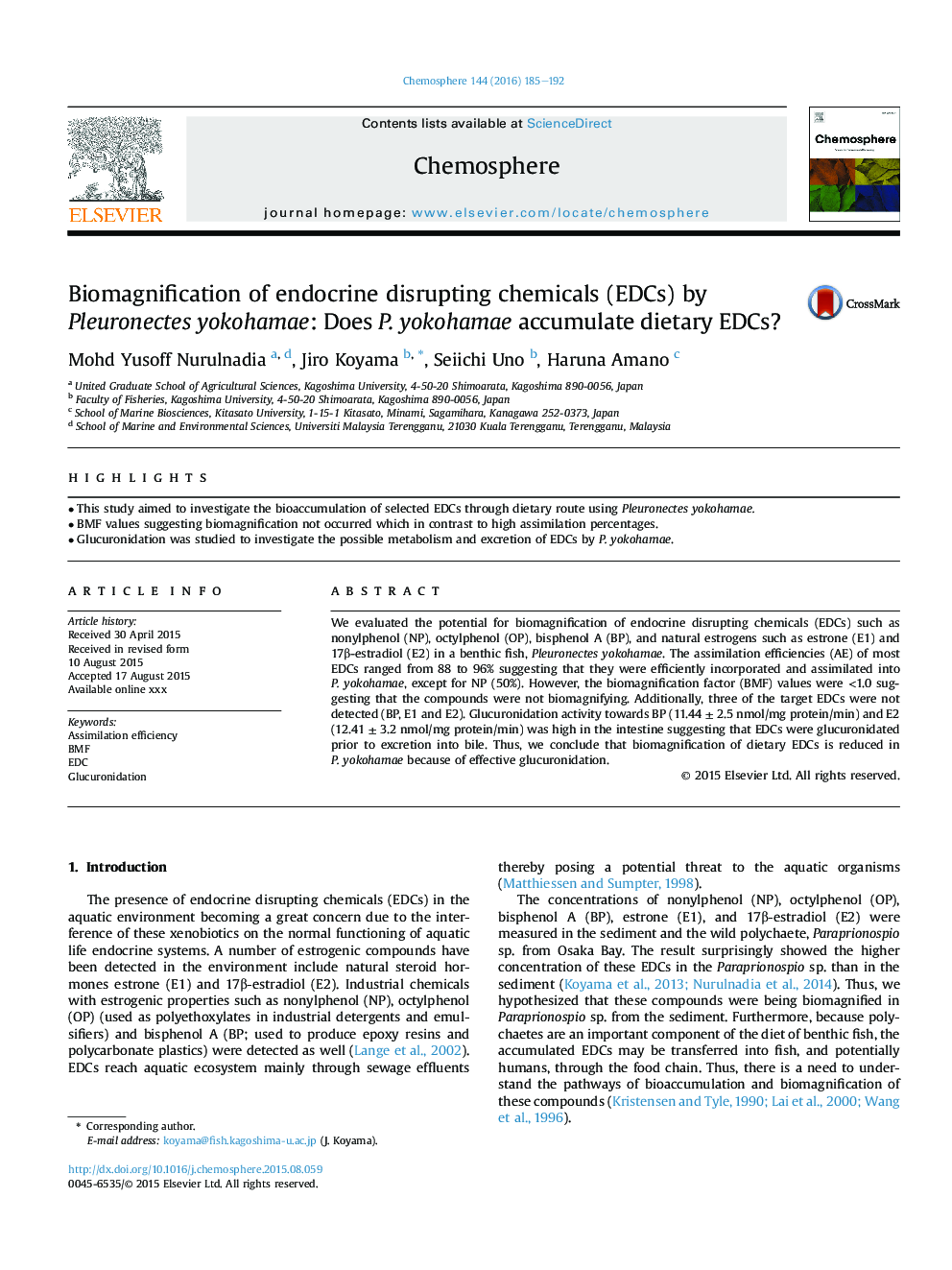| Article ID | Journal | Published Year | Pages | File Type |
|---|---|---|---|---|
| 6307158 | Chemosphere | 2016 | 8 Pages |
Abstract
We evaluated the potential for biomagnification of endocrine disrupting chemicals (EDCs) such as nonylphenol (NP), octylphenol (OP), bisphenol A (BP), and natural estrogens such as estrone (E1) and 17β-estradiol (E2) in a benthic fish, Pleuronectes yokohamae. The assimilation efficiencies (AE) of most EDCs ranged from 88 to 96% suggesting that they were efficiently incorporated and assimilated into P. yokohamae, except for NP (50%). However, the biomagnification factor (BMF) values were <1.0 suggesting that the compounds were not biomagnifying. Additionally, three of the target EDCs were not detected (BP, E1 and E2). Glucuronidation activity towards BP (11.44 ± 2.5 nmol/mg protein/min) and E2 (12.41 ± 3.2 nmol/mg protein/min) was high in the intestine suggesting that EDCs were glucuronidated prior to excretion into bile. Thus, we conclude that biomagnification of dietary EDCs is reduced in P. yokohamae because of effective glucuronidation.
Related Topics
Life Sciences
Environmental Science
Environmental Chemistry
Authors
Mohd Yusoff Nurulnadia, Jiro Koyama, Seiichi Uno, Haruna Amano,
